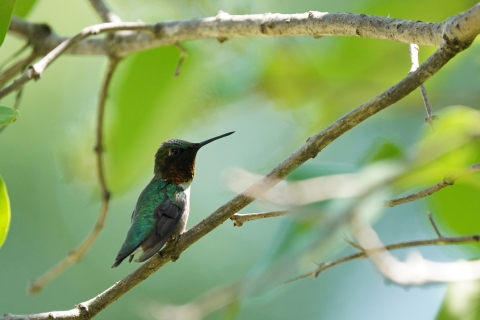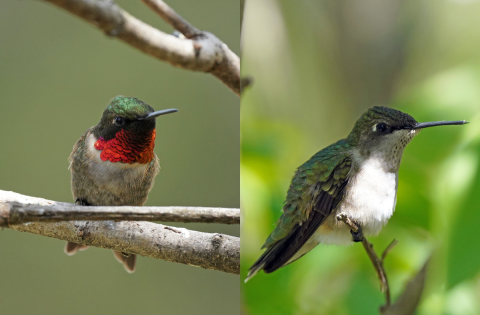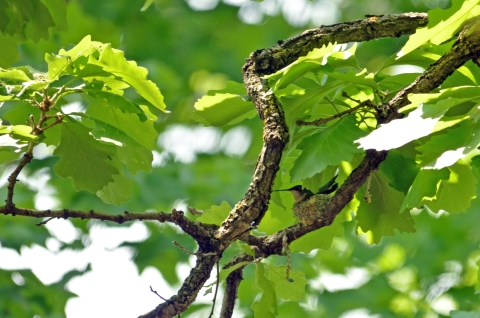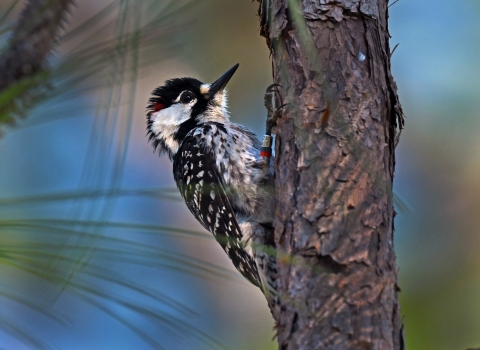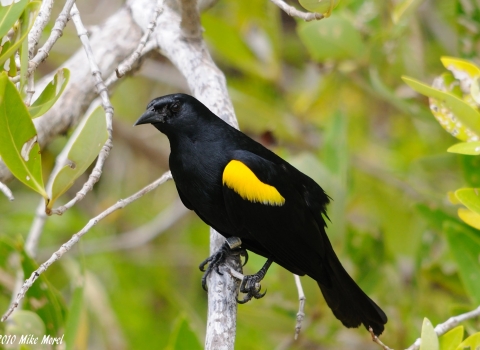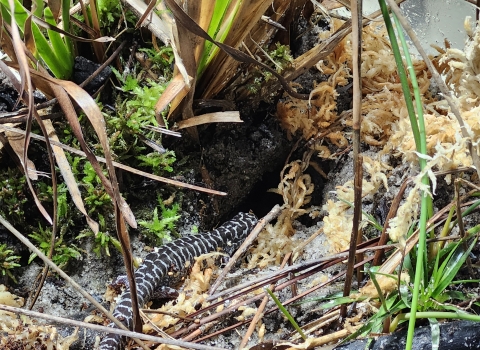Seeing a hummingbird is a universally exciting experience. These tiny birds captivate bird watchers and nature enthusiasts alike with their remarkable agility, iridescent feathers, and incredible migratory journeys.
In eastern North America, the ruby-throated hummingbird is the star of the show. They are the only species of hummingbird known to breed east of the Mississippi River.
Identifying Features
The males are particularly striking, adorned with a brilliant, ruby-red throat patch that shimmers in the sunlight. This characteristic feature contrasts beautifully with their emerald-green back and crown, and white underparts. Females, while less colorful, possess their own subtle beauty. They have a green back and whitish underparts, sometimes showing faint streaks on the throat.
They grow to be approximately 3.5 inches tall and weigh less than a quarter of an ounce.
What makes these birds so special?
Honestly... a lot. They are the ultimate “small but mighty” birds. Ruby-throated hummingbirds are known for their extraordinary flight capabilities. Their wings beat so rapidly—about 53 times per second—that they produce a distinct humming sound, from which their name is derived. This rapid wing movement allows them to hover in mid-air, fly forwards, backwards, and even upside down.
These hummingbirds primarily feed on nectar from flowers, favoring red and tubular blossoms. They play a crucial role in pollination, inadvertently transferring pollen from flower to flower as they feed. Additionally, they consume small insects and spiders, which provide them essential proteins and nutrients.
One of the most remarkable aspects of the ruby-throated hummingbird is its long migratory journey. Each year, these tiny birds travel from their breeding grounds in North America to Central America, and some even venture as far south as Panama. Astonishingly, many cross the Gulf of Mexico in a single non-stop flight, covering up to 500 miles over a period of 18-22 hours.
Where to find ruby-throated hummingbirds?
If you’re not having any luck seeing ruby-throated hummingbirds near your home, you may want to check out a National Wildlife Refuge. Here are some of our top recommendations:
- Tennessee National Wildlife Refuge: Located in Northwest Tennessee, this refuge is well known for its ruby-throated hummingbird banding events each summer. This year's events take place on Saturday, August 10th and 24th. Watch banding demonstrations, enjoy educational programming, and enthuse about hummingbirds with fellow bird lovers. You can find more information about this free event on Tennessee National Wildlife Refuge’s Facebook page.
- Nowhere near Tennessee? That’s okay! Find the National Wildlife Refuge closest to you and try your luck spotting hummingbirds there. They have a widespread range!
Ruby-Throated Hummingbird Photo Contest
As part of our Bird of the Month series, we invite you to submit your photos of ruby-throated hummingbirds in a photo contest.
**In the file name of your photo, please include your first and last name, contact email address, and the location where the photo was taken. If these components are missing, we will have no way of contacting you if you win.**
Submissions will be judged by a panel of U.S. Fish and Wildlife Service employees. Once a winner is selected, they will be contacted via email and asked to sign a photo release form. This form protects the photographer's rights, ensures proper credits are given, and grants the U.S. Fish and Wildlife Service permission to share the photo on our social media channels. Please monitor your junk/spam folders towards the end of the month in the event that we reach out and our email lands there.
The winner will be announced publicly near the end of each month on our Southeast Regional Facebook and X (formerly known as Twitter) platforms.
A photo contest will occur each month for each featured bird species. At the end of 2024, all twelve winning photographs will be shared on our regional social media accounts.
Submit your original photos of ruby-throated hummingbirds here!
5 Fun Facts About Ruby-Throated Hummingbirds
- Remarkable Metabolism: These birds have an extraordinarily high metabolism to support their rapid wing beats and active lifestyle. They consume about half their body weight in nectar daily and must eat frequently to fuel their high energy demands.
- Color-Changing Throat: The iridescent red throat of the male ruby-throated hummingbird, known as a "gorget," can appear to change color or even turn black depending on the angle of the light. This stunning feature is used to attract mates and deter rivals.
- Memory Masters: Ruby-throated hummingbirds have excellent memories, particularly when it comes to locating food sources. They can remember which flowers they've visited, how long it takes for nectar to replenish, and even recognize individual feeders in their territory
- Lifespan Surprises: Despite their delicate appearance and high-energy lifestyle, ruby-throated hummingbirds can live surprisingly long lives. While many succumb to the challenges of migration and predation, those that survive past the first year can live up to 5 to 9 years in the wild.
- Unique Nesting Habits: Female ruby-throated hummingbirds build tiny, cup-shaped nests out of plants, spider silk, and lichens. The nests are often camouflaged and placed on tree branches or in shrubs. They are about the size of a walnut shell. These nests are stretchy, allowing them to expand as chicks grow.


